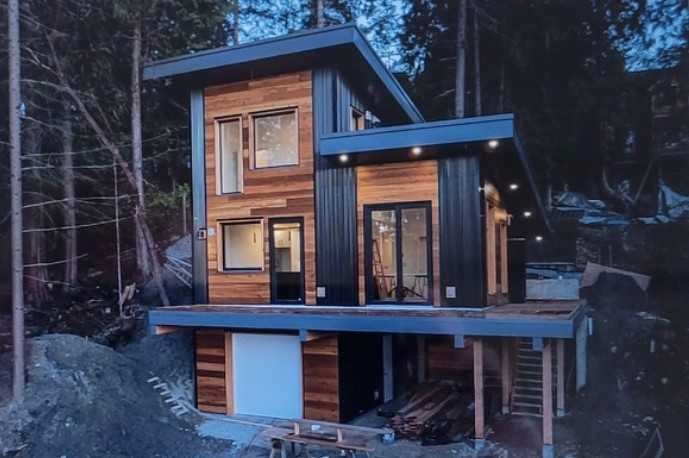A Whistler sustainable building firm is being recognized for its contributions to a project on the Sunshine Coast.
Whistler’s GNAR Inc. served as designer on the Deerhorn Project, a 1,200-square-foot, West Coast-style cabin built on a steep lot near Sechelt.
Using biogenic building materials throughout the home and running entirely off electricity, the build hit Step 5 of the BC Energy Step Code—the highest step builders can achieve.
With that achievement, the project was recognized by Carbon Leadership Forum BC (CLF BC) as the winner in the Small Buildings category at this year’s BC Embodied Carbon Awards.
“Basically, the criteria was both the lowest embodied emissions, but it had to be combined with low operational emissions as well,” said GNAR Inc. founder Edgar Dearden.
CLF BC defines embodied carbon as “greenhouse gas emissions that arise from the manufacturing, transportation, installation, maintenance, and disposal of building materials.”
For example, it is estimated that two tonnes of emissions are produced for every tonne of steel used in a project.
According to a 2022 report from American non-profit the Rocky Mountain Institute, the average embodied carbon emissions for new low-rise residential homes are about 184 kilograms of CO2 per square metre, as determined from 921 model homes across the United States, Canada, and Europe.
Embodied carbon emissions for GNAR Inc.'s Sechelt building are about 13.8 tonnes of CO2, or about 118 kilograms of CO2 per square metre, Dearden said, adding that, due to the efficient design of the building, the total cost to operate the house is under $90 a month.
“I tell people it translates into the most sustainable house in British Columbia,” he said.
“Basically, when you're looking at whole-life carbon, as in the combined operational emissions and the upfront emissions of construction, this house has the absolute lowest, so this house adapts to climate change.
“It's highly insulated, and has a heat pump to cool it. And it's mitigation, because it has very low emissions."
Addressing embodied carbon emissions represents a major hurdle for builders in B.C. and beyond, as they can represent up to 50 per cent of a building’s total emissions over its lifespan.
In recent years, municipalities such as the City of Vancouver and the City of Toronto have created new rules to regulate emissions in new construction projects.
In October 2021, Whistler’s mayor and council approved a two-year project endeavouring to create an embodied carbon guide that would be applicable to all communities in B.C.




